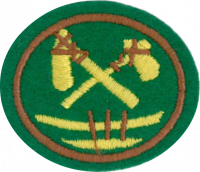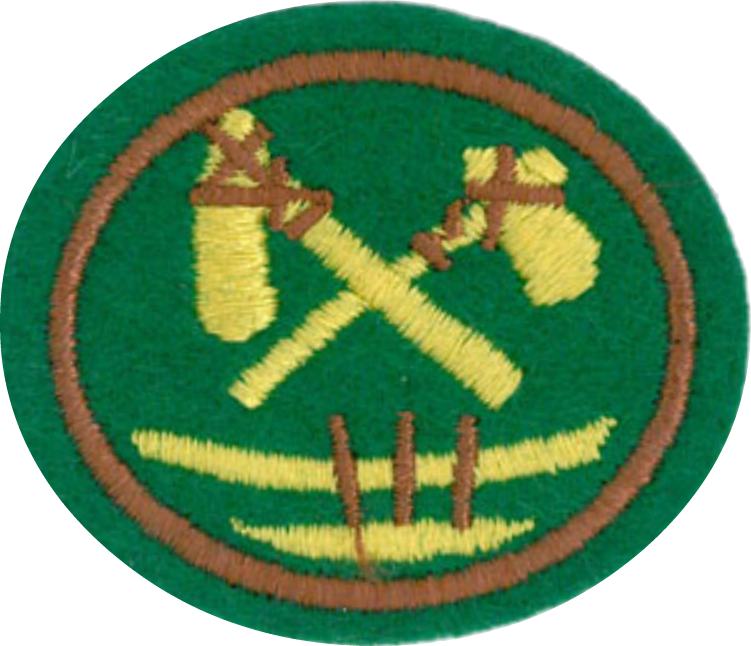Difference between revisions of "AY Honors/Canoe Building/Answer Key/es"
From Pathfinder Wiki
< AY Honors | Canoe BuildingAY Honors/Canoe Building/Answer Key/es
(Created page with "{{clear}}") |
|||
| (12 intermediate revisions by 2 users not shown) | |||
| Line 1: | Line 1: | ||
| − | + | {{HonorSubpage}} | |
| − | |||
| − | {{ | ||
| − | |||
| − | |||
| − | |||
| − | |||
| − | |||
| − | |||
| − | |||
| − | |||
| − | |||
<section begin="Body" /> | <section begin="Body" /> | ||
{{ansreq|page={{#titleparts:{{PAGENAME}}|2|1}}|num=1}} | {{ansreq|page={{#titleparts:{{PAGENAME}}|2|1}}|num=1}} | ||
| Line 38: | Line 27: | ||
{{ansreq|page={{#titleparts:{{PAGENAME}}|2|1}}|num=4}} | {{ansreq|page={{#titleparts:{{PAGENAME}}|2|1}}|num=4}} | ||
<noinclude></noinclude> | <noinclude></noinclude> | ||
| − | <!-- 4. Elegir un buen árbol para canoas de alrededor de 4 metros de longitud y observar la correcta tala del mismo. Explicar lo que pasó. --> | + | <!-- 4. Elegir un buen árbol para canoas de alrededor de 4 metros de longitud y observar la correcta tala del mismo. Explicar lo que pasó. --> |
| − | {{clear}} | + | {{clear}} |
<noinclude></noinclude> | <noinclude></noinclude> | ||
| Line 72: | Line 61: | ||
{{clear}} | {{clear}} | ||
| − | + | {{clear}} | |
| − | |||
| − | + | {{clear}} | |
| − | |||
<noinclude></noinclude> | <noinclude></noinclude> | ||
| Line 82: | Line 69: | ||
{{ansreq|page={{#titleparts:{{PAGENAME}}|2|1}}|num=8}} | {{ansreq|page={{#titleparts:{{PAGENAME}}|2|1}}|num=8}} | ||
<noinclude></noinclude> | <noinclude></noinclude> | ||
| − | <!-- 8. | + | <!-- 8. Ayudar en la construcción de cubiertas, soportes adicionales, mástil y vela, si la canoa es de doble casco o de la clase de soportes adicionales. --> |
| − | |||
| − | |||
| − | + | {{clear}} | |
| − | |||
| − | + | {{clear}} | |
| − | + | {{clear}} | |
| − | + | {{clear}} | |
| − | |||
| − | + | {{clear}} | |
| − | |||
| − | |||
| − | |||
{{clear}} | {{clear}} | ||
| − | |||
<noinclude></noinclude> | <noinclude></noinclude> | ||
| Line 108: | Line 87: | ||
{{ansreq|page={{#titleparts:{{PAGENAME}}|2|1}}|num=9}} | {{ansreq|page={{#titleparts:{{PAGENAME}}|2|1}}|num=9}} | ||
<noinclude></noinclude> | <noinclude></noinclude> | ||
| − | <!-- 9. | + | <!-- 9. Hacer un modelo de árbol de la clase de canoa utilizada en su distrito. --> |
| − | |||
<noinclude></noinclude> | <noinclude></noinclude> | ||
{{CloseReq}} <!-- 9 --> | {{CloseReq}} <!-- 9 --> | ||
<noinclude></noinclude> | <noinclude></noinclude> | ||
| − | == | + | ==Referencias== |
| − | |||
| − | |||
| − | |||
| − | |||
<noinclude></noinclude> | <noinclude></noinclude> | ||
| − | + | {{CloseHonorPage}} | |
Latest revision as of 17:44, 25 July 2022
Construcción de canoas
Nivel de destreza
3
Año
2001
Version
22.12.2025
Autoridad de aprobación
Asociación General
1
¿Qué árboles en su área se utilizan para la construcción de canoas? Nombrarlos en su idioma. ¿Se consideran maderas blandas o duras?
2
¿Qué árboles son utilizados para la construcción de canoas, de maderas blandas o duras?
3
¿Qué herramientas se utilizan para la construcción de las canoas? Comenzar con el talar del árbol hasta la terminación.
4
Elegir un buen árbol para canoas de alrededor de 4 metros de longitud y observar la correcta tala del mismo. Explicar lo que pasó.
5
Describir cómo un tronco es preparado para construir una canoa.
6
Con la ayuda de otros, dar forma de manera correcta a la parte exterior de la canoa y hacer el hueco interior. Correctamente suavizar ambas superficies tanto dentro como afuera.
7
Ayudar en la elaboración de remos, asientos, postes y accesorios de la canoa.
8
Ayudar en la construcción de cubiertas, soportes adicionales, mástil y vela, si la canoa es de doble casco o de la clase de soportes adicionales.
9
Hacer un modelo de árbol de la clase de canoa utilizada en su distrito.


